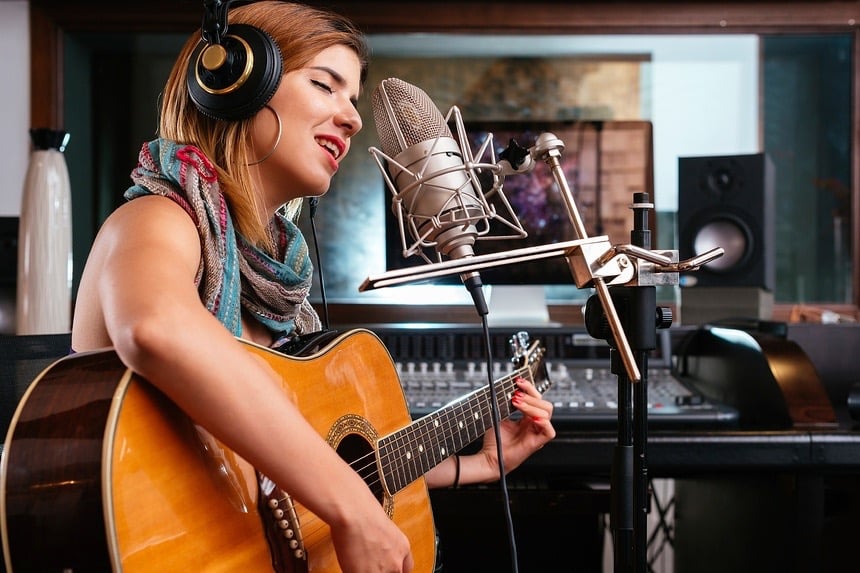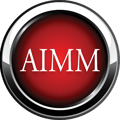How to Warm Your Voice Up Before Singing
No matter what venue you are singing at, an effective vocal warm-up is a crucial step to making sure you sound good from your first note to your last.
Whether your singing in a coffee shop or a stadium, without a decent warm-up, your voice can crack, strain, get raspy or sound slightly off-pitch.
And depending on how much you've sung that week, it could take you an hour to get your voice to its peak.
If you don't warm-up, and your set is only 30-45 minutes long, the audience won't really get to see what you're made of.
If it's not clear by now, you need to warm up your voice before every performance.
But how?
In the article below, we will discuss a 5 vocal warm-up exercises you can use to get your voice ready and performing at its peak.
Table of Contents
 1. The Vocal SeeSaw
1. The Vocal SeeSaw
One thing that should be included in every vocal warm-up is an articulation exercise.
You need to really get your mouth moving because you do not want to mumble during your performance.
That's where the vocal seesaw can help.
Start at the bottom of your vocal range, and in one breath, sing up and back down over a major scale.
Make sure to anchor your bottom note so that you sing the same note in between every other note you sing, so it resembles a seesaw.
In the key of C it looks like this: CD, CE, CF, CG, CB, CC, and then back down.
As an added bonus, do this exercise using the words "doo bah" to get your lips and jaw loose.
2. Lip Bubble
The lip bubble will get your voice warm and reduce vocal tension all at the same time.
You might remember these from your childhood or if you have kids now. Lip bubbles are very similar to blowing a raspberry.
To do a proper lip bubble, start by putting your fingers into your cheeks near your lips on both sides of your mouth. Make sure to relax your lips, jaw, and tongue.
Now the fun part. Blow a raspberry without any sound until you can get that going consistently without breaking the flow of air.
Once you've got it going consistently, add an "ahh" sound while you do it.
Now that you have that under control, you can use the lip bubble with any simple vocal exercise such as a major scale or arpeggio.
3. Octave Jumps
You need to be sure to vocalize and relax during your warm-up, but that's not all you need to focus on.
You also need to work on your intonation and connecting with your breath.
Octave jumps are a fantastic way to do just that.
Keeping your notes short and detached, start from one of the lowest notes in your vocal range, and then quickly switch between that note and the same note an octave above three times.
Because you're keeping your notes short, your pitch accuracy may falter, so just concentrate on hitting both notes straight on each time.
People commonly make the mistake of falling flat on the top note or singing sharp on the bottom note. Try to avoid that if possible.
Once you've done that, move up a note and repeat.
4. Elevator Slides

With elevator slides, you can work through your vocal registers and smooth out any breaks.
To do an elevator slide, you'll make a noise similar to a long, slow siren.
Start by using an "ah" sound and slowly descend from high to low and back up.
Be sure to keep your throat relaxed and don't let your notes catch in your throat as you sing higher.
This can easily happen if you don't move the resonance up into your head voice.
Speed the exercise up as your voice gets warmer, and switch the "ah" sound to an "ee" and then an "ooh" sound that'll work a slightly different vocal placement each time.
5. Tongue Rolls
Tongue rolls are similar to lip bubbles because they can warm your voice quickly and reduce vocal tension.
Your tongue is actually what causes most vocal tension, so it only makes sense to practice rolling your Rs to keep your tongue loose and flexible.
Practice rolling your Rs first to see if you can keep that consistent without breaking or spluttering for the length of one breath. Once you do, add an "aah" sound to it.
While you're doing a tongue roll, do a simple vocal exercise like moving up and down three notes.
You might not be able to sing up quite as high with this exercise because tongue rolls keep your larynx down slightly. Unfortunately, there are individuals who struggled to roll their Rs in general, which would make this warm-up significantly difficult or borderline impossible.
If tongue rolls come easy to you, move onto doing tongue rolls with major arpeggios.
Warm Up And Sing Your Heart Out

Above are five great warm-up techniques you can use to get yourself ready for your next show.
Make sure you warm-up as long, or as short, as it needs to be to get your voice to its peak performance level.
A good way to test your vice is to sing a range of songs that include the lowest notes you can sing, all the way up to the powerful belt notes.
When you do that, you'll know if you're done warming up, or if you need to go a little longer. Remember to stay hydrated and take it easy at first as you build up to the belt notes.
If you do all of this, you'll sound amazing as soon as you hit the stage.
If you're serious about pursuing your passion in singing, you need to check out the Atlanta Institute of Music and Media.
AIMM is an Atlanta Vocal School that provides its students with the instructional environment necessary to develop their musical talents and acquire the skills demanded of today’s professionals in the music industry. You'll learn from industry-leading voice instructors and develop life-long music industry connections.
Learn how to perfect your tone, master your voice, and expand your range.
Learn more about AIMM's Voice degree and certificate by clicking the button below.














